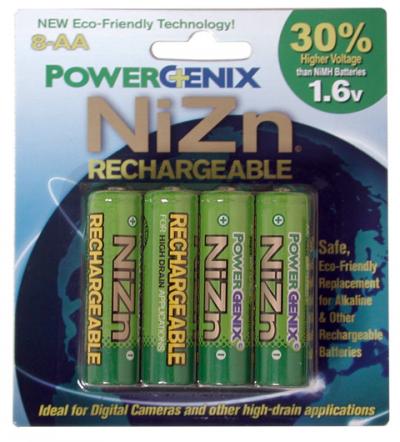https://www.econologie.com/forums/piles-jeta ... 10144.html
Christophe wrote:Ayé I found it is Nickel Zinc (AA NiZn) and it is even in 1.6V:
No idea if it's distributed in Europe.* Highest Performance for high-drain applications
* Environmentally friendly and 100% recyclable
* 1.6 VoHs- equal to an alkaline battery
* Higher power (30% higher voltage than NiMH)
*We recommend PowerGenix Chargers
PowerGenix NiZn AA batteries are more powerful than NiMH and NiCD (1.6V for NiZn vs. 1.2V for other rechargeable). NiZn is also environmentally safe, unlike throwaway alkaline. Every part of this battery is recyclable, from the interior components to the packaging it comes in.
NiZn technology is perfectly suited for high-tech devices like MP3 players, digital cameras, toys, and LED lights.
PowerGenix NiZn batteries must be charged using a NiZn charger: we recommend the PowerGenix Quick 1-1.5 Hr. Charger.
Experience the Power by making the change to cutting-edge, environmentally friendly PowerGenix NiZn Chargers and Batteries today
Petrus wrote:I think I just found out why we don't find these batteries in France, it's a patent PB:
http://www.lexpansion.com/economie/cett ... 22090.html
http://scps.fr/
It would mean that we already find nickel zinc batteries manufactured according to a French patent, and that the French who filed the patent does not sell anything!
the principle nickel zinc seems simple enough, only defect the zinc is redisposed anyway and makes short circuits after a low number of cycles: it does not seem to me a big problem for large batteries which could be easy to dismantle and clean


